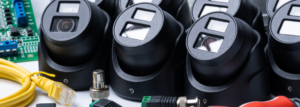Categories
- Alarms, alarm systems
- Battery and batteries
- Antennas for alarm systems
- Alarm headquarters
- Detector
- Keyboards (manipulators)
- Mini alarms
- Communication modules
- Mounting clamp modules
- Wireless remote controls and controllers
- Other alarm accessories
- Placing buttons
- Satel Be Wave
- Alarm detectors lenses
- Signaling devices
- Alarm detectors testers
- Handles for alarm detectors
- Alarm system sets
- House / garden / automotive
- Home intercoms and videoophones
- HDMI
- Intelligent home
- Cables, sockets, plugs
- Motine and concealed sockets
- Cables
- Keystone - connectors and accessories
- USB switches and branches
- Wires
- Patchcordy RJ45 to 1.0 m
- Patchcordy RJ45 to 3.0 m
- Patchcords RJ45 to 50 m
- Cards for cameras and mobile recorders
- BNC connection cables for looming of devices
- CINCH-CCY (RCA-RCA), CINCH-JACK connection cables
- DisplayPort connection cables
- Euro-cu connection cables
- EURO-EURO connection cables
- IEC and F connection cables (TV-Video)
- Jack connection cables
- Telephone connection cables (RJ-9, RJ-11)
- USB connection cables
- VGA connection cables
- Power cables
- Connectors
- Access control
- Meters
- Monitoring, Czech TV
- Camera dummy
- Photoplapts
- CCTV sockets
- HD-CVI
- HD-TVI
- Hybrids
- IP
- Thermal imaging cameras
- Hidden cameras and a special purpose
- Keyboards and controllers
- GPS locators
- Mobile vehicle monitoring
- Audio modules
- Monitors
- Stickers and information boards
- Lenses
- Camera housings
- Video signal processing
- Radio communication
- Headlights
- Video testers with LCD monitor
- Video transformers
- Wireless video broadcast
- Camera handles
- Handles for TV and monitors
- Electrical installation equipment
- Accessories for switchgears
- 230V sockets
- Low -current sockets
- Hermethization of connectors
- Intelligent executive elements
- Fasteners
- Pressing connectors
- Signaling lamps
- Counters, electricity calculators
- Emergency lighting
- Intelligent lighting
- LED lighting
- Frames for sockets and connectors
- Switchboards
- Plug branches
- Fuse disconnectors
- Insulation disconnectors
- Soldering equipment
- STHACKS AND TRANSPORT Modules
- Topic inserts
- 230V plugins
- Overcurrent switches
- Lifestyle circuit breakers
- Computer components
- Other products
- Rack 19 ″ and 10 ″
- Optical fiber
- Accessories for optical fibers
- Toslink optical accessories (for hi-fi connections)
- Cables, cables
- Media converters (conversion between the LAN network and fiber optic)
- SFP modules
- Muffes and fiber optic switches
- Patch panel-e, accessories
- Fiber optic measurements
- Welding optical fibers
- Fiber optic video converters
- Silencers
- Fire signaling systems
- Assembly technique
- Construction chemistry and accessories
- Other accessories
- Flashlights
- Masts
- Installation materials
- Expansion pins
- Cable tips - electric connectors
- Cable bars
- Electric cubes
- Cable bands
- Cable rod covers / listeners
- T -shirts (T -shirts)
- Rigid electrical installation pipes
- Spiral and noted pipes
- Rapid connections
- Insulation tapes
- Mounting and repair tapes
- Warning tapes
- Cable holders
- Cable sleeves
- Handles for clamping bands
- Handles, culverts and installation connectors
- Hand tools
- Clamp
- Metal bands
- Preparations for cleaning, lubrication and maintenance
- Electric cans
- Mounting boxes
- Tool boxes and organizers
- Probes for dragging wires (remote controls)
- Handles
- Drill
- SDS-Plus drills
- Ground and satellite television
- Network devices
- Power supply
- Batteries
- Batteries
- Fuses
- Sockets, plugs, power cables
- Power connectors
- Power slats, extension cords
- Relay modules
- Powerbanks and power stations
- Other power supplies
- Voltage converters
- Power separators
- Network voltage stabilizers
- Antenna power supplies
- 12V power supply
- 24V power supply
- 48V power supply
- 5V ... 9V power supply
- POE power supply
- Power POE 802.3af (AT)
- Emergency power supply
- Store
- Recommended
- Recommended
- Novelty
- Popular
- Top products
- Green Cell charger
- Wi-fi Full-Fi-COLOR ip camera
- IP solar camera, outer with PIR detector
- IP IP internal rotary tuya smart wi-fi
- Wireless PIR detector
- DISK FOR HDD 16 TB recorder
- HDMI branch
- Carbon monoxide detector (chad)
- Workshop ladder
- Intelligent Tuya Wi-Fi switch
- Smoke detector
- Workshop carrier
- Wall remote control for LED lighting controllers
- Intelligent LED lighting controller
- Contact
- PLN
-
PLN
-
EUR
-
Czk
-
22 items






